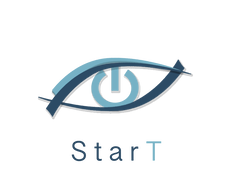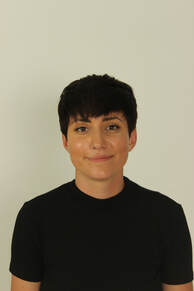ESR10: Optimisation, delivery and tolerability of antisense oligonucleotides to treat STGD1 patients with the most common splice mutations in ABCA4
|
|
Melita Kaltak
My name is Melita Kaltak and I will be joining the StarT crew the 1st of September as a PhD student within ProQR located in Leiden, the Netherlands. It will be the first time for ProQR to be involved in a Marie Curie Network, and I am super happy to be part of that! I am 24 years old, originally coming from Croatia, but I lived for many years in Italy and Sweden while studying. Recently I graduated in Functional Genomics at the University of Trieste in Italy, and, since then, I am working as a Laboratory Engineer within a research group at the Sahlgrenska Cancer Center in Gothenburg, Sweden. I have many hobbies, but I would say that I am most passionate about music. In my free time I play the drums, and I like to attend concerts and music festivals. Most of the time you can spot me among the first rows checking the drum player’s technique. Beside music, I love sports and spending time outdoors in the nature. Before discovering science, for many years I played tennis and was part of a volleyball club in the first Croatian league. I am very excited for having the opportunity to work with ProQR and being part of an important European project such as StarT, and I will be more than happy for contributing with my knowledge in all missions and challenges together with other 13 PhD students and their supervisors. Prospected date to obtain my PhD degree is June 24, 2024. Being part of a MSCA consortium is truly a unique experience. I appreciate the many opportunities it has provided, such as expanding my network significantly, attending prestigious conferences and workshops, and gaining a broader understanding of my work by collaborating with my MSCA fellows. The time spent at partner institutions helped me gain wider knowledge on laboratory techniques and connect with other scientists within the same field. I would definitely choose to have this experience again without any second thoughts. In December 2023, I joined Astherna, a spin-off company of the Radboud University Medical Center, as Scientist. My responsibilities involve overseeing the Chemistry, Manufacturing and Controls (CMC), as well as Toxicology studies related to the development of antisense oligonucleotides as therapeutic intervention for retinal diseases. I find this opportunity very exciting as it allows me to implement the knowledge gained throughout my PhD studies on advancing antisense oligonucleotides to clinical trials and making a difference in the community affected by retinal diseases. |
Abstract
ProQR is currently in Phase IIa clinical development with a splice modulating AON (QR-110) targeting the deep-intronic c.2991+1655A>G mutation in LCA type 10. In addition, they have two additional AON programs in Usher syndrome targeted all exon-13 mutations (QR-421a) and c.7595-2144A>G (QR-411a), respectively, in pre-IND/CTA enabling studies. ProQR is also in the discovery phase with regards to an intronic ABCA4 mutation (c.5461-10T>C), one of the most frequent mutations underlying STGD1 that results in the exclusion of exon 39, or exon 39 and exon 40 together, from the mRNA, leading to a frameshift. ESR10 will continue this program and optimise the sequence and chemistry of the final molecule to generate a clinical development candidate. This lead candidate will be further optimised by determining the extent of target engagement using digital-droplet PCR, immune-profiling against human donor T-lymphocyte panels, delivery to photoreceptors tolerability and pharmacokinetic parameters following intravitreal injection of mouse and rabbit models.
ProQR is currently in Phase IIa clinical development with a splice modulating AON (QR-110) targeting the deep-intronic c.2991+1655A>G mutation in LCA type 10. In addition, they have two additional AON programs in Usher syndrome targeted all exon-13 mutations (QR-421a) and c.7595-2144A>G (QR-411a), respectively, in pre-IND/CTA enabling studies. ProQR is also in the discovery phase with regards to an intronic ABCA4 mutation (c.5461-10T>C), one of the most frequent mutations underlying STGD1 that results in the exclusion of exon 39, or exon 39 and exon 40 together, from the mRNA, leading to a frameshift. ESR10 will continue this program and optimise the sequence and chemistry of the final molecule to generate a clinical development candidate. This lead candidate will be further optimised by determining the extent of target engagement using digital-droplet PCR, immune-profiling against human donor T-lymphocyte panels, delivery to photoreceptors tolerability and pharmacokinetic parameters following intravitreal injection of mouse and rabbit models.




